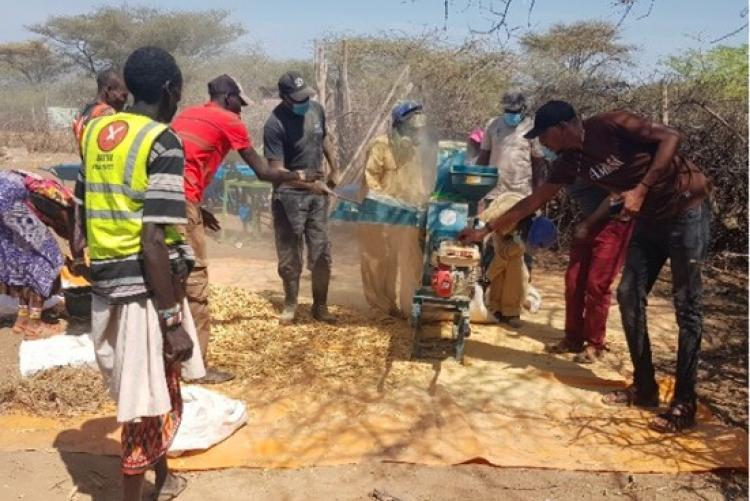Rangelands are types of land within Arid and Semi-Arid Lands (ASALs) dominated by natural or semi-natural vegetation suitable for extensive livestock production and wildlife conservation, but are less appropriate for arable farming due to limitations such as scarce and unreliable rainfall, high evapo-transpiration, and low soil fertility, and very short growing season that hardly reaches 200 growing days. The main economic activity in the rangelands is pastoralism that is characterized by low external input livestock production, which relies mainly on natural vegetation. Globally, rangeland ecosystems cover about 40% of land area that is occupied by more than 38% of the total world population.
In Africa, rangelands occupy approximately 43% of the continent’s land surface, more than half of the 70% of the terrestrial surface that is categorized as drylands. They support about 2 billion people worldwide, 268 to 325 million pastoralists & agro-pastoralists in Africa. About 69% of the rangelands in developing countries are used for livestock production and contributes 10% of global meat production. Livestock production in rangelands accounts for between 50% and 80% of agricultural gross domestic product (GDP) in developing countries. Besides supporting most of the livestock population that contribute 10% – 50 % of the individual countries’ agricultural GDP in the Horn of Africa, these areas provide various plant and animal resources, minerals and oil.Because of their global extent and diversity of ecosystem goods and services they supply, often beyond their boundaries, rangelands condition and trends are linked closely to the economic well-being of many communities and hence their sustainable management and conversely their degradation are of critical importance to mankind.
Rangelands in Africa are the new frontiers for development; as Africa’s population grows, rangelands serve as sinks for the immigrant population from the agriculturally high potential areas. In addition, with infrastructure development, and expansion of urbanization, towns located in the rangelands now act as business hubs that link the frontiers to the rest of the countries. Given their immense contribution to local, national and regional economies, achievement of food security and climate change mitigation and adaptation, squarely depend on how best we manage the vast drylands. Despite their economic and ecological importance, rangelands are under constant threat from among other factors, land use and land tenure changes that result in injudicious use and subsequent range degradation, as well as lack of appropriate policies or weak implementation where they exist. Climate change adds another layer of challenges to the problems already facing rangelands.
It is against this background that the section of Rangeland Management becomes relevant for the purpose of building capacity and generating empirical evidence to guide policy and practice. The section of Range Management strives to produce a critical mass of experts with a good understanding of the rangeland ecosystems and production systems to further research for the purpose of informing decisions, and guiding formulation of appropriate policies. Our training and research emphasize sustainability science as the basis for informing interventions and adaptations that will confer resilience to the dryland ecosystems and livelihoods, especially in the face of socio-cultural, economic and biophysical changes that are exacerbated climate change.
Since 1980s, the University of Nairobi has been the leading institution in dryland training and research in Sub-Saharan Africa and has continued with the mandate of providing leadership in dryland resource management in the region to date. Our PhD, MSc and BSc programmes are deliberately designed and regularly reviewed to respond to changing needs of the industry, as well as the contemporary challenges as they arise. The section of Rangeland Management endeavors to produce holistic graduates, future policy makers and innovators in Dryland ecosystem and livelihoods.

